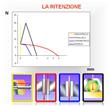The attachment is a connection device between removable and
fixed parts of combined prostheses.
It is the connecting element of the prosthesis with its supporting elements (natural teeth or implants). It can be prefabricated, which is to say industrially realized, or custom made, which is to say realized by the dental technician directly on the crown with the milling machine.
Kind of prefabricated attachments
The prefabricated attachments can be divided into:
- RIGID ATTACHMENTS (or more easily “attachments”) which is to say those whose only function is the retention between fixed and removable parts in order to facilitate the insertion and to avoid the accidental detachment.
- RESILIENT ATTACHMENTS (improperly defined “damper” or “stress-breaking attachments”) which is to say those devices designed to create the sufficient mechanical play (movement) to make the pillars (teeth or implants) able to withstand the variations in the seating of the prosthesis due to deformations of the mucosa and underlying tissues, without placing excessive stress on the abutments.
Which is the optimum retentive force of an attachment?
The fundamental reference parameter of pro-regress of the retentive force establishes that this should reach its maximum (about 7N) unconditionally and exclusively when the prosthesis is completely inserted. The retention force of the attachments with parallel sliding walls, gradually increases during the insertion and decreases, ever gradually, during the removing. The retention is maximum (about 7N) in the final insertion position of the matrix with the patrix. This is a movement dynamics favourable for the patient, as now scientifically validated. Retention peaks higher than the retentive value have to be avoided during the removal, because in this case the natural or implant pillar would suffer a too high extraction stress.
For this reasons the systems with elastic underequatorial retention present a higher stress on the prosthetic supporting structures (natural teeth or implants).
Principle of design and functioning of a rigid attachment
The essential condition for an attachment, to function correctly in time, is to be used only for its retentive function. The attachment must not be loaded by any vertical, sagittal or horizontal force so that it only has to avoid an adverse vertical displacement of the partial prosthesis during the function.
TO DO IT, IT IS NECESSARY TO COMBINE THE RIGID ATTACHMENT WITH THE MILLING.











 Printable version
Printable version  Request informations
Request informations  Tell a friend…
Tell a friend…